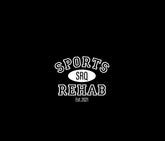Unlocking the Secrets of Shoulder Labral Tears
Whether you're a seasoned athlete or just someone who wants to live a pain-free life, this post on SRQSportsRehab.com is your ultimate guide to understanding, treating, and recovering from labral tears.
But first, let's get to know our enemy – the shoulder labrum. It's a piece of cartilage that forms a cup-like structure around your shoulder socket, helping to stabilize and protect the joint. Labral tears can vary in location and severity, but they generally fall into four main categories:
-
SLAP Tears (Superior Labral Tear from Anterior to Posterior): These tears occur at the top of the labrum and are often seen in overhead athletes. Think baseball pitchers, swimmers, or tennis players. They can be tricky to diagnose because the symptoms might mimic other shoulder problems, but early detection is key.
-
Bankart Tears: Commonly associated with shoulder dislocations, Bankart tears happen when the labrum gets pulled off the front of the socket. Athletes in contact sports like football or wrestling are prone to this type of injury.
-
Posterior Labral Tears: These tears happen at the back of the shoulder socket, often due to repeated overhead movements. Gymnasts, weightlifters, and swimmers are at risk.
-
SLIP (Superior Labrum from Posterior to Inferior) Tears: Found at the top and back of the socket, SLIP tears often result from falls or direct trauma to the shoulder.
Now, let's talk about labral tears in the context of shoulder dislocations. Dislocations can indeed cause labral tears, particularly Bankart tears. When your shoulder pops out of its socket, it can tear the labrum and damage the surrounding structures. If you've ever experienced a dislocated shoulder, you know the excruciating pain that comes with it. This is where our journey to recovery begins.
So, how can you treat and improve shoulder labral tears effectively? Here's the lowdown on the evidence-based strategies:
-
Physical Therapy: The backbone of labral tear recovery is physical therapy. A skilled therapist will tailor exercises to your specific tear type and work on strengthening the shoulder muscles to provide added support. The goal is to reduce pain, improve range of motion, and enhance shoulder stability.
-
Surgical Intervention: When non-surgical methods don't cut it or if your tear is severe, surgical options may be necessary. These can range from minimally invasive arthroscopic procedures to more complex open surgeries.
-
Lifestyle Modifications: Pay attention to your daily activities. Avoid movements that exacerbate your condition and incorporate shoulder-friendly habits into your routine.
-
Preventive Measures: Once you've recovered, it's essential to take measures to prevent re-injury. Strengthen your shoulder muscles, maintain good posture/stability, and stay cautious in high-risk activities.
Rehabilitating a shoulder labral tear is a critical decision, and understanding the differences between surgical and non-surgical approaches, as well as emerging therapies like stem cells and peptide therapy, can help you make an informed choice. Additionally, it's essential to consider the associated risks of shoulder dislocation with surgery compared to non-surgical rehab. Let's delve into these aspects:
1. Surgical Rehabilitation vs. Non-Surgical Physical Therapy:
Surgical Rehabilitation:
-
Indications: Surgery is typically recommended for more severe labral tears, especially in cases of Bankart or SLAP tears, where there is a high risk of recurrent dislocations or significant functional impairment.
-
Procedure: Surgical procedures involve repairing or reattaching the torn labrum. Arthroscopic surgery is minimally invasive, while open surgery may be necessary for more complex cases.
-
Recovery: Post-surgery, patients undergo a structured rehabilitation program, including physical therapy, to regain strength, stability, and range of motion. Recovery can take several months, with a gradual return to activities.
-
Benefits: Surgery can provide a more immediate and potentially complete resolution of the tear, especially in high-demand athletes or those with recurrent dislocations.
Non-Surgical Physical Therapy:
-
Indications: Non-surgical approaches are considered for less severe tears, those with minimal symptoms, or when the patient prefers to avoid surgery.
-
Treatment: Physical therapy focuses on strengthening the shoulder muscles and improving mobility to support the injured area.
-
Recovery: Recovery time may be shorter compared to surgery, but it depends on the tear's severity. Non-surgical rehab typically takes a few weeks to a few months.
3. Risk of Shoulder Dislocation with Surgery vs. Non-Surgery Rehab:
Surgery:
-
Risk: There is a risk of recurrent shoulder dislocation, typically in the early stages of recovery. The surgical procedure aims to reduce this risk by repairing the torn labrum and stabilizing the joint. However, post-surgery, there's a risk of complications such as infection, nerve injury, or stiffness, which could impact joint mobility.
Non-Surgical Rehab:
-
Risk: Non-surgical rehab focuses on strengthening the shoulder to prevent dislocations. However, if the tear is severe and the patient doesn't respond well to rehab, there's a risk of continued instability, which may lead to recurrent dislocations.
In summary, the choice between surgical and non-surgical rehab for a shoulder labral tear should be based on the tear's severity, the patient's lifestyle, and their preferences. Emerging therapies like stem cells and peptides hold promise but require further research. Additionally, the risk of shoulder dislocation should be carefully considered, and both surgical and non-surgical approaches have their associated risks and benefits. Consulting with a healthcare professional is crucial to make the best decision for your specific condition.
Now, for some credible references to back up these strategies:
-
Kibler, W. B. (2017). The role of the scapula in athletic shoulder function. The American Journal of Sports Medicine, 35(2), 364-372.
-
Burkhart, S. S., & De Beer, J. F. (2000). Traumatic glenohumeral bone defects and their relationship to failure of arthroscopic Bankart repairs: significance of the inverted-pear glenoid and the humeral engaging Hill-Sachs lesion. Arthroscopy, 16(7), 677-694.
-
Manske, R. C., & Prohaska, D. (2000). Diagnosis and management of superior labral (SLAP) lesions. Journal of Orthopaedic & Sports Physical Therapy, 30(5), 276-288.

